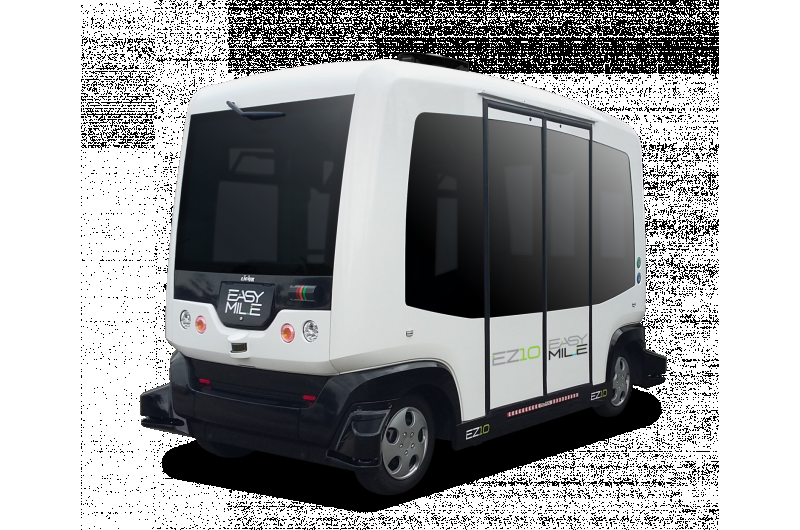San Francisco still carries this aura, even after the beatnik era of the last century, of being the place for change, new ideas, quirky concepts and original thinking. It comes as little surprise that this is the locale where self-driving buses are being tested out for eventual use on the open road.
To be more exact, two self-driving buses, shuttles in type form, each costing $250,000, are in for tests in a parking lot. The goal is to have them taking passengers realtime—eventually.
The pair of buses are described by reports as 12-passenger shuttle buses, with space for six seated and six standing. The buses are from a French private company, EasyMile. The vehicles are completely electric.
And when they are described as autonomous, they are in seriously autonomous. No backup drivers. No human in the driver seat to correct anything that the bus does or does not do or hit the brakes.
The vehicles do have several emergency stop buttons, said Government Technology. They also carry GPS and lidar technology, the report added, delivering a 360-degree view around the shuttle about 50 yards out.
Well, one encouraging sign. Reuters reported that "Habib Shamskhou, a program manager who strolled in front of a moving bus to show that the vehicle would notice him and react. It stopped."
What was exceptional about these particular shuttles was a distinct lack of a steering wheel and pedals of any kind, said Ryan McCauley, staff writer, Government Technology.
Reuters said they began driving around an empty San Francisco Bay Area parking lot. It's a business park parking lot.
This is the Bishop Ranch business park in San Ramon, California. "The 30,000 workers employed at Bishop Ranch will soon be able to sign up for rides in the shuttles, so long as they agree to provide feedback as to how the buses are performing," according to Government Technology.
What's the plan regarding dates? "The vehicles are expected to swing onto the local street late this year or early in 2018," said the report from Reuters.
"The testing is expected to take place over the course of the next few months in parking lots before its operators apply for Department of Motor Vehicles approval," said Tyler Lee in Ubergizmo.
In the bigger picture, it is interesting to note that "California and other states are weighing the opportunities of becoming a hub of testing a technology that is seen as the future of transportation," said Reuters. "California legislators late last year passed a law to allow slow-speed testing of fully autonomous vehicles without steering wheels or pedals on public roads."
Autonomous buses are not the whole story. The SF initiative could signal a new way of thinking about efficient transport systems.
Contra Costa Transportation Authority (CCTA) Executive Director Randy Iwasaki appears to be a thought leader in this direction. The two shuttles are being eyed as a possible first mile/last mile (FM/LM) mobility solution.
He described a scenario where buses load people from Bay Area Rapid Transit (BART) stations and drive them down the highway to the business park, and then return to the station empty, to complete the trip over again. This is a day-in day-out route.
What if they were replaced by smart autonomous shuttles as a feeder system? These could drive people from the neighborhood surrounding the business park and drop them off at the BART stations. "This would essentially double the utility of these vehicles that are not being used today, said Iwasaki."
The shuttles can operate 14 hours a day with a six- to eight-hour charging period, said EasyMile's Marion Lheritier.
© 2017 Tech Xplore






















